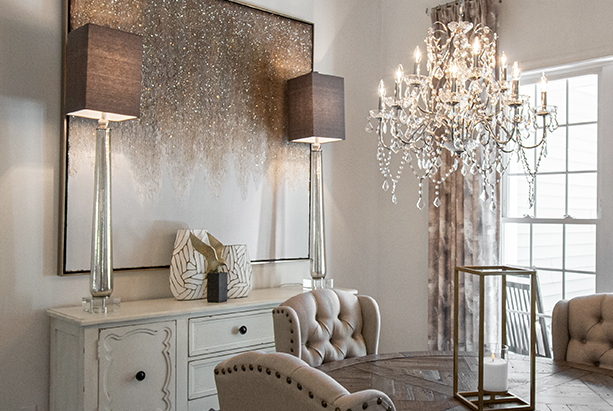As a designer, it’s important to keep my finger on the pulse of current trends. But, I also think it’s critical to understand the history of design and how one style influenced the next. Trends are, after all, cyclical.
With that in mind, I hope to impart a brief understanding of each design period that has occurred over the last century or so. And what better example to use than the humble table lamp? A constant in design since the beginning of its commercial use in the late 19th century, it’s the perfect vessel through which we can trace style over the ages.
Art Nouveau
Born in response to the industrial age, art nouveau took hold around 1895 and lasted until World War I. People became tired of the mass-produced goods of the Victorian Age and instead began to favor organic designs inspired by nature. Design elements included flowers, wavy lines, and asymmetrical shapes. The iconic Tiffany glass lamps belong to this movement.
Modernism
Spanning the first three decades of the 20th century, modernism adopted the defining principle form follows function, meaning the objects’ purpose decided its design. It focused on utility, mass-production, and was often minimalist in design. Instead of taking literal elements from nature like the art nouveau period, modernism instead attempted to be in harmony with nature. Design elements included geometric forms and long horizontal lines. The famous architect Frank Lloyd Wright belongs to this movement.
Art Deco
Emerging in the 1920s, art deco rejected the practical focus of modernism in favor of extreme luxury and exclusivity. Designs varied greatly in this period. Some took inspiration from art nouveau and included organic details, while others took a more simplistic, modernist approach. The difference is that art deco designs used expensive materials and featured masterful craftsmanship that could not be mass-replicated. The opulence of art deco ended with the start of World War II.
Mid Century Modernism
Mid Century Modernism was born in the United States in the 1950s and 60s while Europe rebuilt from the war. It drew on the utility and mass-production of early modernism, but rejected the rigid notions of geometric form and function. Instead, design elements drew on contemporary culture and art, making designs warmer and more human.
Pop & Postmodernism
The social unrest of the 1970s gave rise to pop and postmodernist design. Postmodernism, simply put, rejected the pillar of modernism that there were “good” and “bad” designs. Rather, the designer’s creativity reigned. Pop art and culture also heavily influenced design. Designers took inspiration from Andy Warhol, the iconic pop artist who blurred the lines between popular culture and high art. No material or form was off-limits.
GailGray Home is open daily for shopping and much needed retail therapy in a safe and inspiring space. If you need design assistance, please see our staff in the store. We are happy to help make your house a home.

